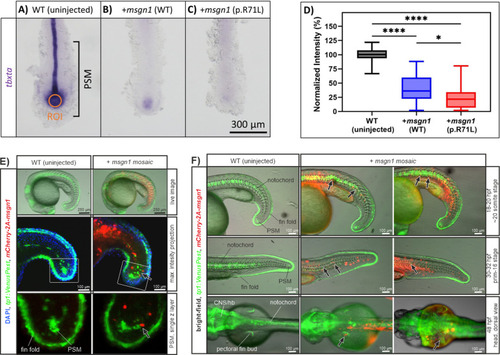Fig. 4
- ID
- ZDB-FIG-240308-7
- Publication
- Koparir et al., 2024 - Zebrafish as a model to investigate a biallelic gain-of-function variant in MSGN1, associated with a novel skeletal dysplasia syndrome
- Other Figures
- All Figure Page
- Back to All Figure Page
|
In situ hybridization images of |

